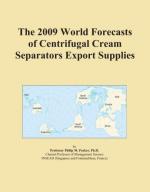|
This section contains 245 words (approx. 1 page at 300 words per page) |
Cream is the yellowish part of milk, rich in fat, that naturally rises to the surface if milk is allowed to stand. Before mechanical separators came into practical use, cream had been separated from milk with small strainer dishes--obviously a slow and tedious process. In 1877, the Swedish inventor Carl Gustaf Patrik de Laval introduced a high-speed centrifugal cream separator. Milk was placed in a chamber heated to 86°F, which is the best temperature for separating cream. From there the milk went through tubes to a container that was spun at 4,000 revolutions per minute by a steam engine. The centrifugal force created by this spinning action separated the cream, which was lighter, causing it to settle in the center of the container. The milk, which was heavier, was pushed to the outer part and forced up to a discharge pipe, leaving only the cream remaining in the container. This machine was successfully marketed and used in large dairies throughout the world.
Over the years, improvements were made to this basic concept. In 1888, an advanced cream separator was introduced in Scotland; it was self-skimming, emptied itself completely, and was easily cleaned. Manual machines soon appeared for those unable to afford a steam engine as a power source. In 1896, a new machine called the butter accumulator appeared with the ability to separate and make butter in one continuous operation. Today the most efficient cream separators leave less than 0.01% fat in the skim milk.
|
This section contains 245 words (approx. 1 page at 300 words per page) |


